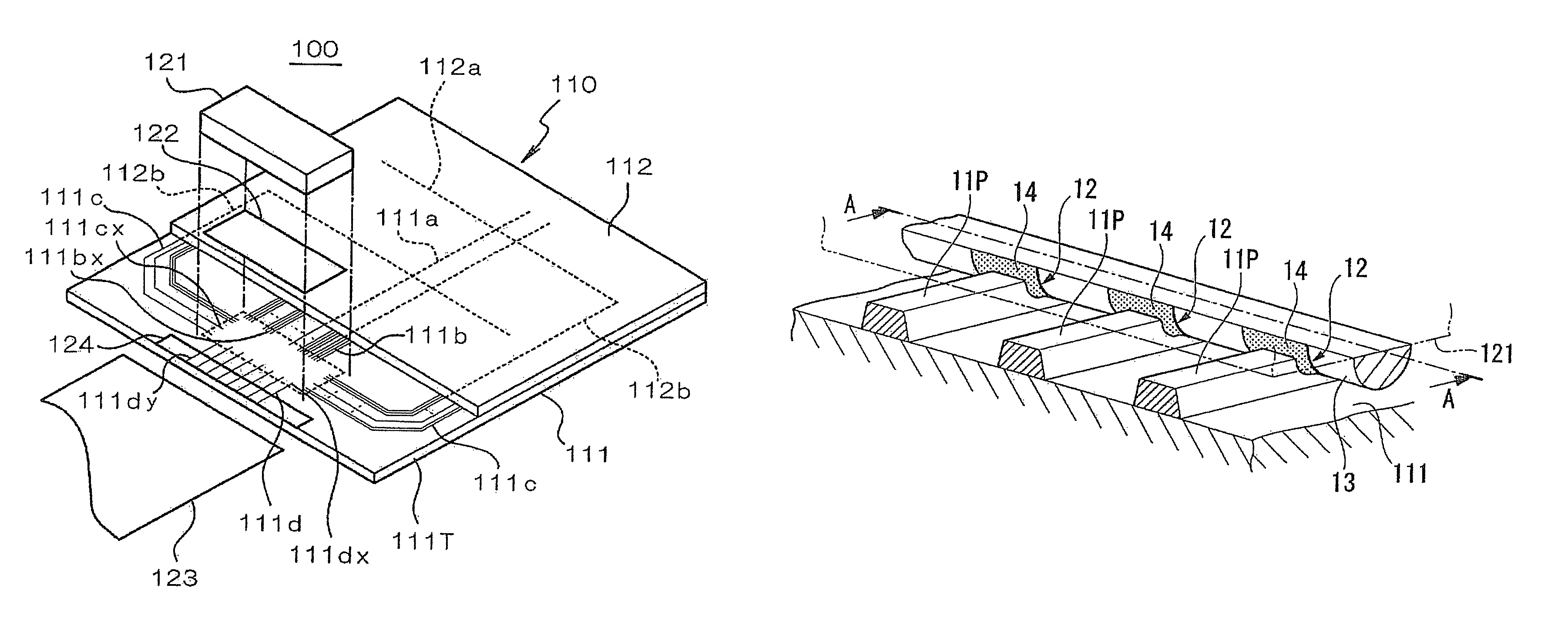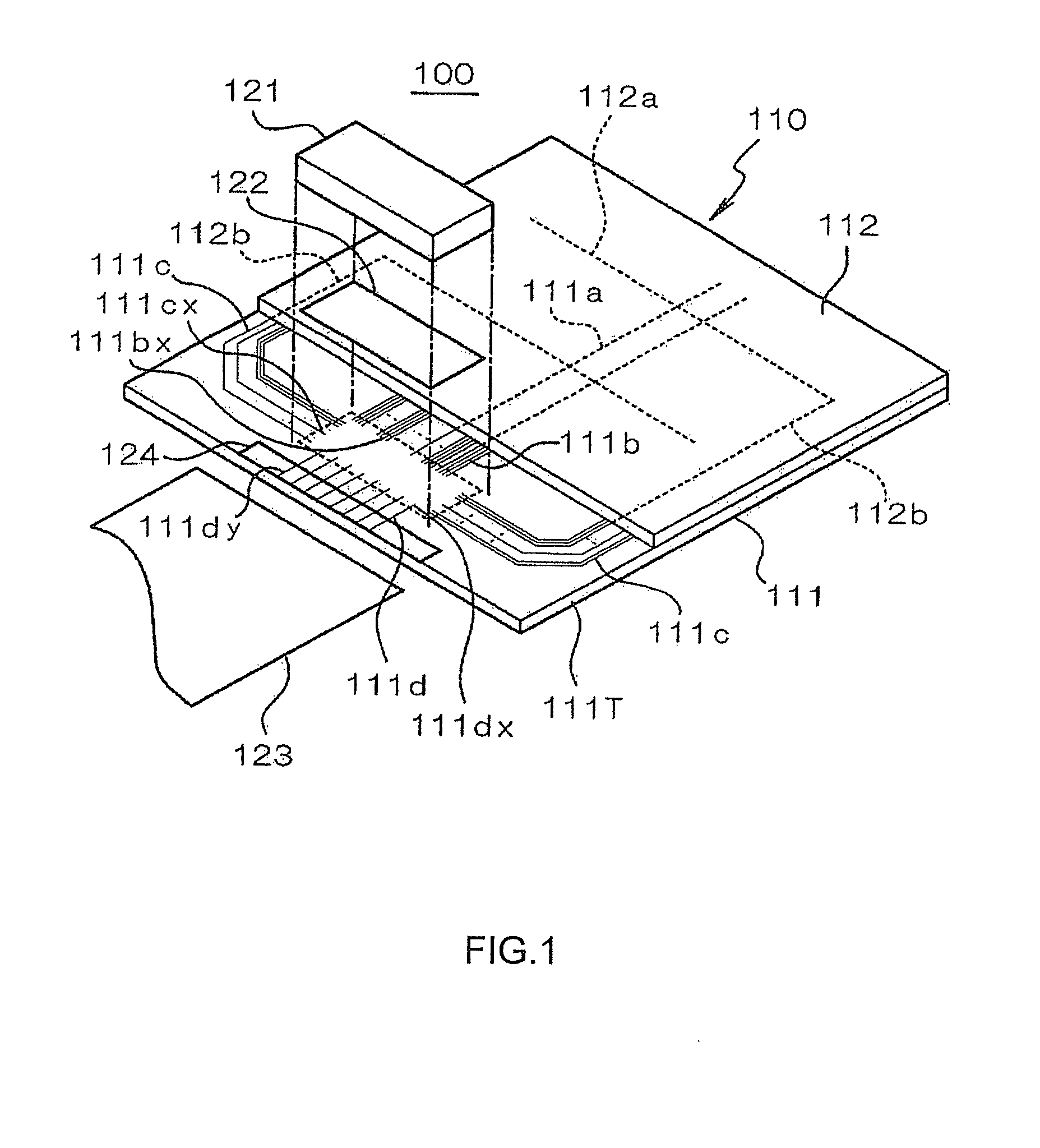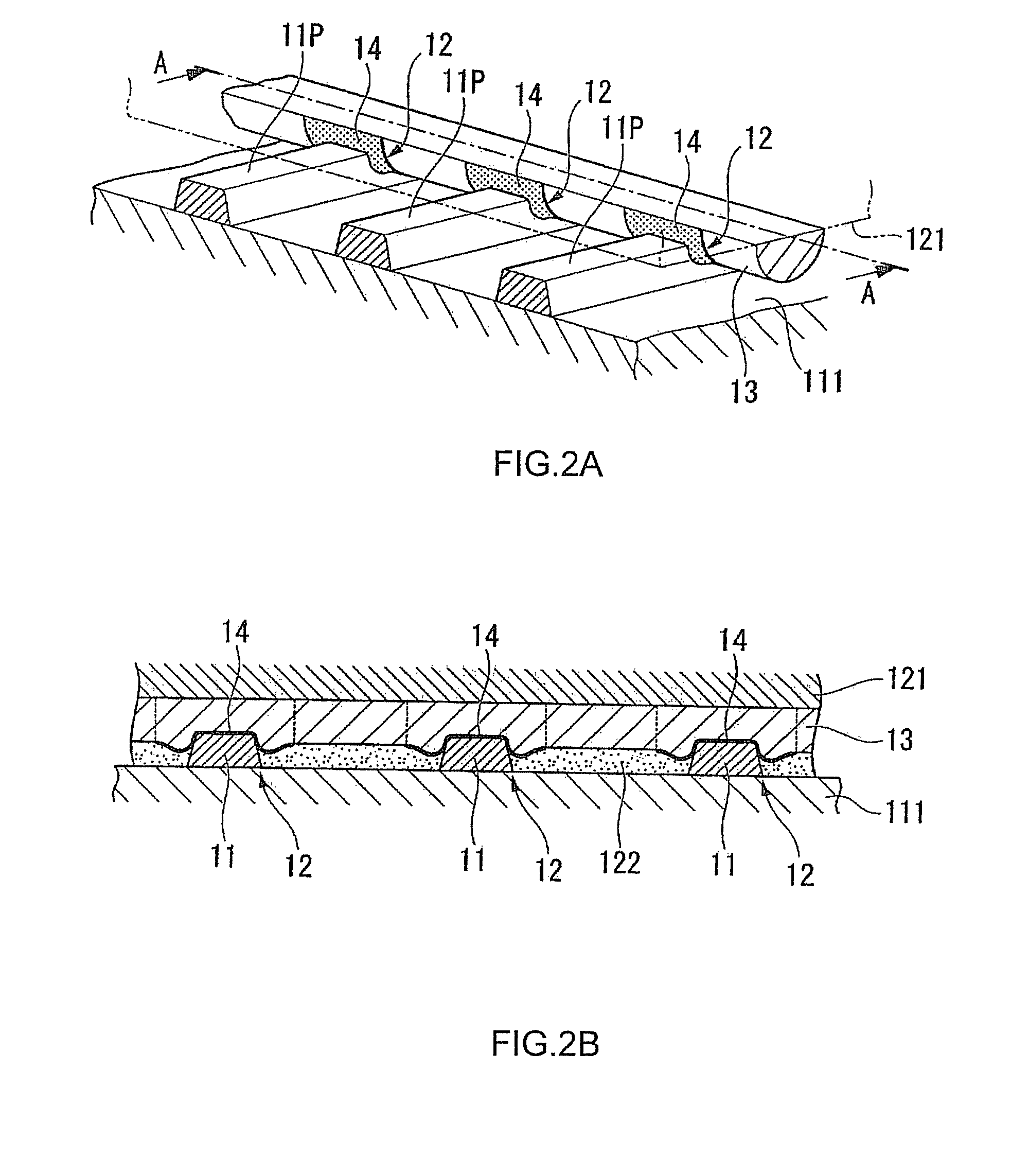Mounting structure of electronic component
a technology of electronic components and mounting structures, applied in the direction of optics, instruments, printed circuit aspects, etc., can solve the problems of insufficient bonding strength, fluctuation in distance, contact defects, etc., to improve the reliability of conductive connection status, improve bonding strength, and improve the effect of bonding strength
- Summary
- Abstract
- Description
- Claims
- Application Information
AI Technical Summary
Benefits of technology
Problems solved by technology
Method used
Image
Examples
first embodiment
[0065]FIG. 4A is a drawing illustrating a status before mounting the electronic component 121 to the substrate 111, and is a magnified sectional view corresponding to the main parts of the FIG. 2B. Hereafter, the terminals 11, the bump electrodes 12, and the conductive films 14 are described in singular. The substrate 111 and the electronic component 121 are positioned so that the terminal 11 and the bump electrode 12 face each other. In this state, a pressure is applied to the direction to bond each other, so that the conductive film 14 of the bump electrode 12 is bonded with the terminal 11 as shown in FIGS. 4B and 4C, thereby having a conductive contact. In the state of the conductive film 14 and the terminal 11 having a conductive contact, in other words, in a state in which a predetermined pressure is applied, the sealing resin 122 (refer to FIG. 2B) as the holding unit according to the aspect of the invention is filled and cured between the substrate 111 and the electronic com...
second embodiment
[0072]FIG. 6 is a drawing illustrating the mounting structure of the electronic component according to the aspect of the invention. The second embodiment is different from the first embodiment shown in FIG. 4D in that the conductive film 14 in the bump electrode 12 follows only the corners 11c of one side, and not the corners 11c of both sides.
[0073]In recent years, size reduction, as well as an increase in the degree of high-integration of mounting structures of electronic components are accelerating, and so as the narrowing of wiring pitch and a wiring width. Therefore, due to the misalignment of bump electrodes and terminals and the mispositioning of substrates and electronic components during the manufacturing, sufficient bonding strength cannot be obtained between these bump electrodes and the terminals, and this may cause a contact defect (conductive defect).
[0074]For this reason, the mounting structure in the second embodiment has a structure that prevents the contact defect ...
third embodiment
[0083]However, a mounting structure 30 shown in FIG. 8 has a preferable bonding (coupling) state between a terminal 11A and one of the bump electrodes 12 as well as between a terminal 11B and another one of bump electrodes 12, even when the substrate 111 distortion causes the height of the terminal 11A to be different from that of the terminal 11B. In other words, even when a distance L1 is different from a distance L2, the distance L1 being a distance between the top surface 11a of the terminal 11A and the forming surface of the bump electrodes 12 of the electronic component 121, and the distance L2 being the distance between the top surface 11a of the terminal 11B and the forming surface of another one of the bump electrodes 12.
[0084]That is to say, in this mounting structure 30, the elastic deformation of the bump electrodes 12 absorbs a difference between the distance L1 and the distance L2, i.e. the fluctuation in the distance between the bump electrodes 12 and the terminals 1...
PUM
 Login to View More
Login to View More Abstract
Description
Claims
Application Information
 Login to View More
Login to View More - R&D
- Intellectual Property
- Life Sciences
- Materials
- Tech Scout
- Unparalleled Data Quality
- Higher Quality Content
- 60% Fewer Hallucinations
Browse by: Latest US Patents, China's latest patents, Technical Efficacy Thesaurus, Application Domain, Technology Topic, Popular Technical Reports.
© 2025 PatSnap. All rights reserved.Legal|Privacy policy|Modern Slavery Act Transparency Statement|Sitemap|About US| Contact US: help@patsnap.com



